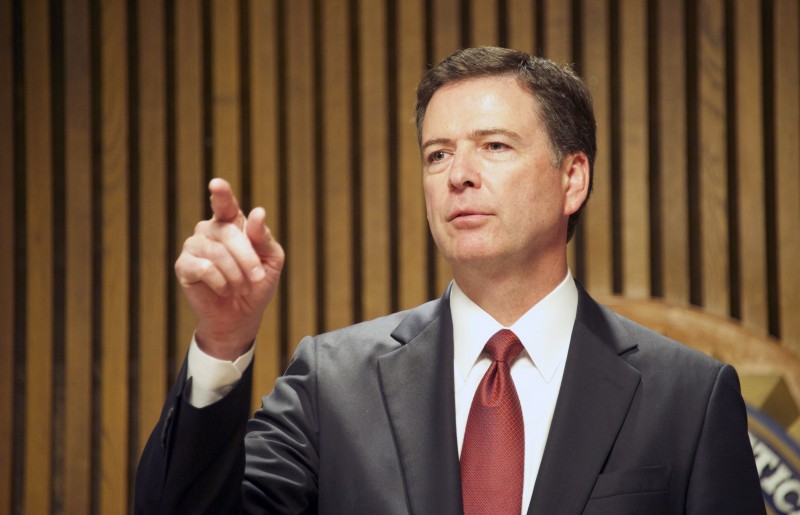Former FBI Director James Comey now believes that President Donald Trump was trying to influence his judgment about the Russia probe, a person familiar with his thinking says, but whether that influence amounts to obstruction of justice remains an open question.
“You have to have intent in order to obstruct justice in the criminal sense,” the source said, adding that “intent is hard to prove.”
Comey will testify publicly before the Senate intelligence committee after Memorial Day, the panel’s leaders announced Friday.
The central question at that blockbuster hearing will be whether Comey believed the President was trying to interfere with his investigation.
At a news conference Thursday, Trump angrily denied that he had asked Comey to end the investigation, which is now in the hands of new special counsel Robert Mueller. The President blasted the probe into Russia’s involvement in the 2016 election and possible collusion with his campaign as a “witch hunt.”
Comey’s view of Trump’s intent in their conversations is nuanced, sources say. He initially believed that he could school the new President and White House in what was appropriate during their communications.
But after his firing, the question of Trump’s intent could become more problematic, one source said. Trump told NBC’s Lester Holt in an interview that he was thinking “of the Russia thing” when he dismissed Comey.
Sources say Comey had reached no conclusion about the President’s intent before he was fired. But Comey did immediately recognize that the new President was not following normal protocols during their interactions.
As The New York Times has reported, after numerous encounters with the administration, Comey felt he had to set the parameters of appropriate protocol very clearly. After the President asked Comey to let it be known publicly he was not under investigation, Comey told the President that if he wanted to know details about the bureau’s work he should ask the White House counsel to communicate with the the Justice Department, according to the Times.
According to one source with knowledge, Comey’s relationship with Trump was uncomfortable from the start. The director had some hope that, over time, he could effectively point out the appropriate procedures and guidelines to both Trump and the White House staff about how the process of communications normally works. It didn’t turn out that way.
One Comey memo reportedly claims that Trump asked the FBI director to “let this go”– referring to the FBI investigation into Gen. Michael Flynn’s contacts with the Russians — although the President himself has flatly denied that he ever did that.
While it is unknown whether the President has either tapes or notes of his conversations with Comey, the FBI director kept meticulous memos and shared them with his team contemporaneously.
Benjamin Wittes, editor in chief of the Lawfare blog and a Comey friend, writes that Comey called his interactions with Trump “training” in order to “re-establish” appropriate boundaries. In his conversations, Wittes writes, “Comey never specifically said this was about the Russia matter” but he assumed that it was. Comey saw his job, Wittes writes, as an effort to “protect the rest of the bureau from improper contacts and interferences from a group of people he did not regard as honorable.”
Wittes told The New York Times that the now-infamous hug from the President — from which Comey tried to hide behind a blue curtain — left the director “disgusted.” Wittes writes “he regarded the episode as a physical attempt to show closeness and warmth in a fashion calculated to compromise him before Democrats who already mistrusted him.”
The dinner with the President, which Wittes describes as “the loyalty dinner,” took place five days after that hug.
